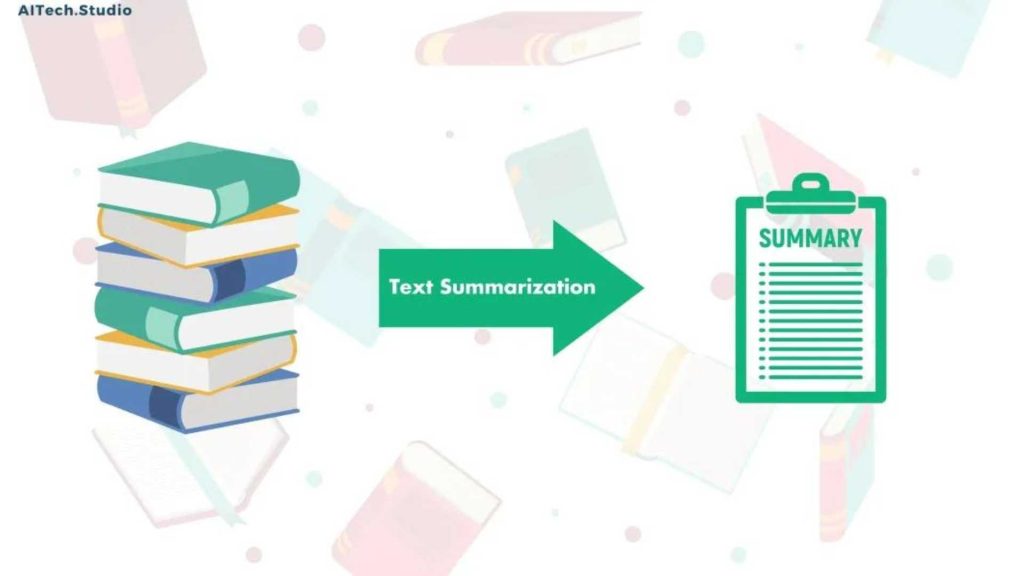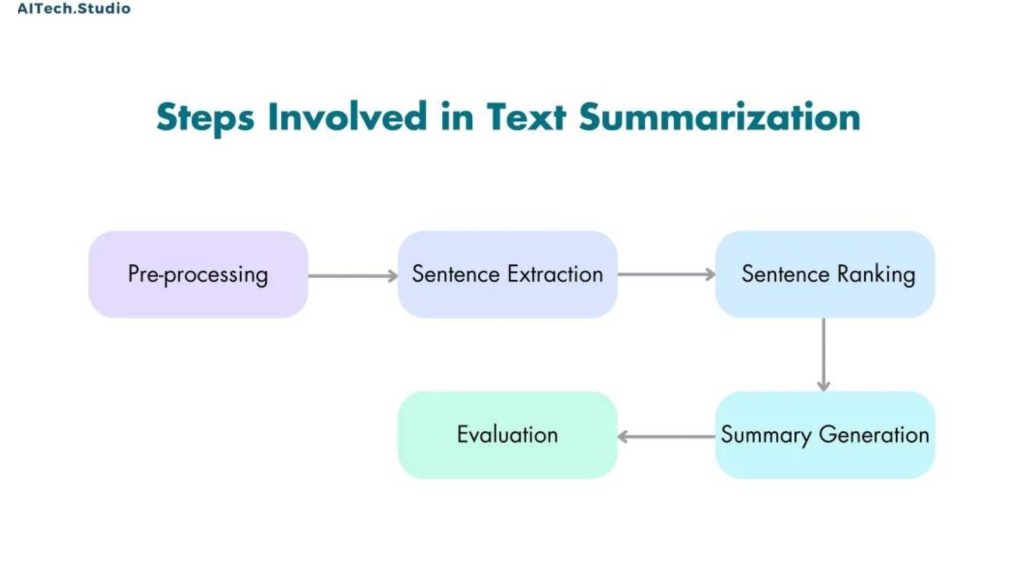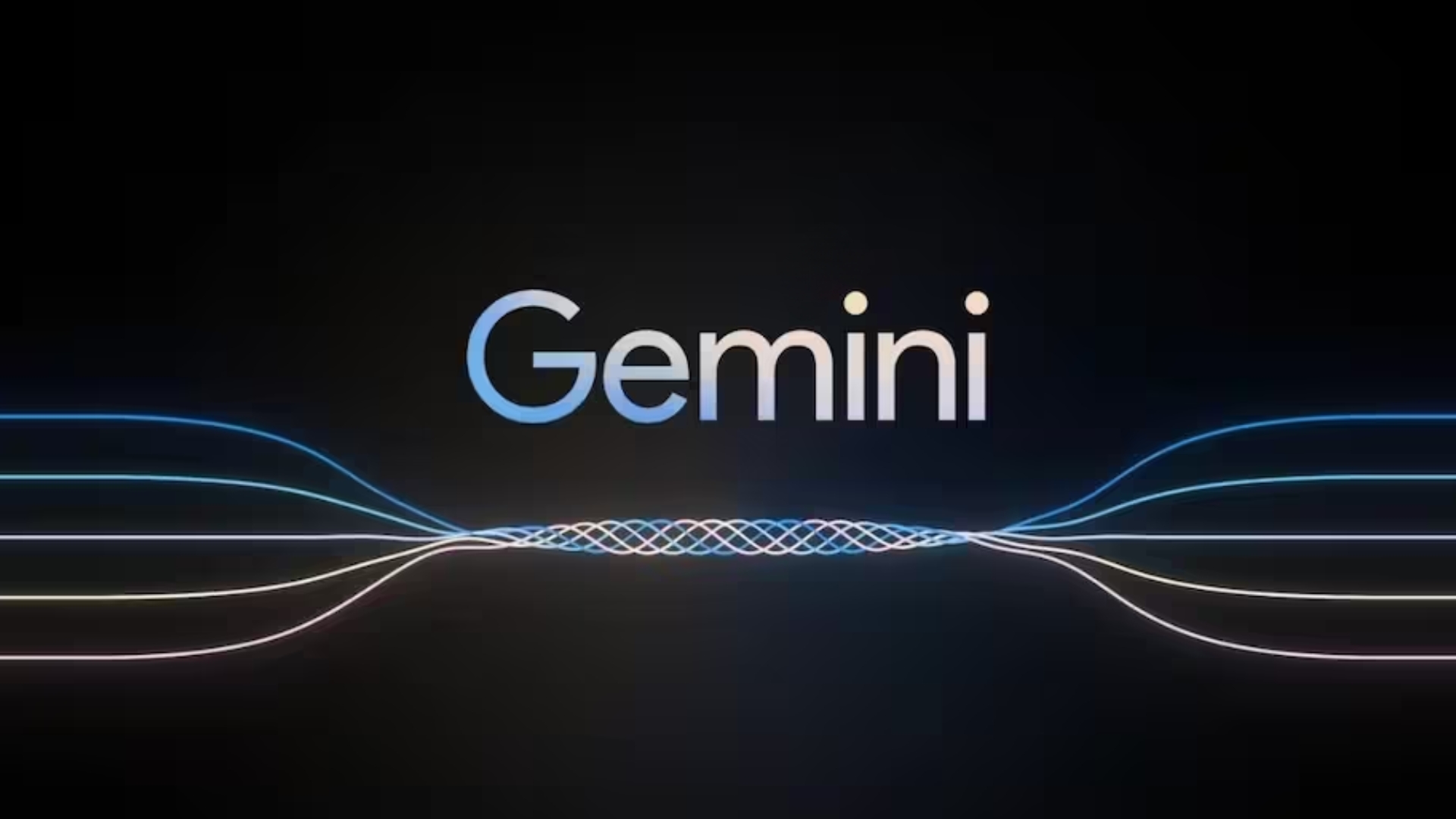Finding it hard to keep up with all the information online? Spending hours reading articles or reports that don’t match what you’re looking for? Text summarization can save you time. Help you concentrate on the details.

What is Text Summarization?
Text summarization is a method that enables us to shorten texts while keeping the details intact. Of going through an article or document a summary offers us the main points quickly. Thanks to progress various tools and methods, for summarizing have become available though individuals can still craft summaries manually. A summarizer is an algorithm that can examine a text and produce a condensed version while retaining the information. The goal of text summarization is to decrease the content while preserving the essence of the material. The summary generator considers the fundamental concepts, points, and significant sentences of the text to create a summary that captures the core of the document.
Why Text Summarization is Important?
In this era of technology, we are often overwhelmed, by the volume of information that comes our way. Finding the information promptly can sometimes be a task. Text summarization plays a role in saving time and allowing us to concentrate on the details. This is especially valuable in professions, like journalism, where condensing the aspects of an article into an informative summary is essential.
Text Summarization: The Best Methods and Techniques
Text summarization involves condensing passages of text into versions while preserving key details. The three primary methods of text summarization include abstractive and a combination of both.
- Extractive summarization
- Extractive summarization involves selecting the most important sentences or phrases from the original text and using them to create a summary.
- This is done by analyzing the text for important keywords, named entities, and other important information.
- Extractive summarization is the most common type of text summarization and is widely used in news articles and scientific papers.
- Abstractive summarization
- Creating a summary entails crafting an overview similar, to how people do it – by comprehending the text’s essence and generating a new summary rooted in that comprehension.
- Creating this kind of summary is tougher as it involves using natural language processing (NLP). Deep learning algorithms produce a summary that’s not only precise but also makes sense.
- Hybrid summarization
- Hybrid summarization is a combination of extractive and abstractive summarization.
- This method initially picks out the sentences or phrases in the text. Subsequently employs NLP and advanced learning algorithms to create a summary that is precise and logical.
Pre-Processing to Summary: Essential Steps It’s Here

- Pre-Processing
- Before summarizing the text it’s important to clean and prepare it by eliminating stop words, punctuation marks, and any extra characters.
- It also requires stemming and lemmatization to simplify words to their base form. Pre-processing also involves recognizing and deleting any content, like ads or pictures.
- Sentence Extraction
- Sentence extraction is the process of selecting the most relevant sentences from the pre-processed text to be included in the summary.
- This can be done through various methods, such as identifying the most frequent words or by using machine learning algorithms to identify the most important sentences based on their semantic meaning.
- Sentence Ranking
- Once the most relevant sentences have been identified, the next step is to rank them in order of importance.
- This can be done using algorithms that take into account factors such as sentence length, word frequency, and sentence position within the text. Sentence ranking is crucial in creating a summary that accurately captures the most important information from the original text.
- Summary Generation
- After the relevant sentences have been selected and ranked, the next step is to generate a summary from these sentences. This can be done by selecting the top-ranked sentences and combining them into a coherent and concise summary.
- Depending on the requirements of the summary, it may also involve rephrasing or restructuring some of the sentences to improve readability.
- Evaluation
- The final step in the text summarization process is evaluation. This involves assessing the quality and accuracy of the generated summary by comparing it to the original text.
- Various metrics can be used to evaluate the summary, such as ROUGE (Recall-Oriented Understudy for Gisting Evaluation) and BLEU (Bilingual Evaluation Understudy).
Improving Text Summarization Tools: Valuable Techniques
Text summarization is a valuable technique that can help individuals quickly understand the most important information contained within a larger document. However, to ensure that the summary is both accurate and efficient, several techniques can be employed.
- Pre-processing techniques
- Pre-processing techniques involve preparing the text before summarization. This includes removing stop words, punctuation, and other non-relevant information. By cleaning the text, the summarization algorithm can more easily identify the most important information to include in the summary.
- Machine learning techniques
- Machine learning techniques involve using algorithms to identify important sentences, phrases, and words in the text. This can be done using techniques such as neural networks, support vector machines, and decision trees.
- These techniques allow the algorithm to better understand the context and meaning of the text, and identify the most relevant information to include in the summary.
- Evaluation techniques
- Evaluation techniques involve measuring the effectiveness of the text summarization algorithm. We can use metrics such as ROUGE (Recall-Oriented Understudy for Gisting Evaluation) and BLEU (Bilingual Evaluation Understudy) to do this.” (active voice)
- By evaluating the summarization algorithm, developers can identify areas for improvement and make adjustments to ensure that the summaries produced are accurate and efficient.
By employing these techniques, developers can create more accurate and efficient text summarization tools. News organizations, academic institutions, and businesses can use these tools in a variety of settings.
Some of the popular summarizing tools and summarizers include Sumy, GPT-3, BERT, and many more. Furthermore, you can also use summary generators to generate summaries quickly from longer documents.
Tailored Summarization: Customized Better Features

- Automatic: Text summarization is an automatic process that uses natural language processing (NLP) techniques to analyze a given text and extract its most important information.
- Language-Independent: As long as there are NLP tools and resources available for a language, anyone can apply text summarization to that language.
- Time-Saving: Text summarization saves time for readers by providing a condensed version of a text that is easier to understand and process.
- Scalability: Text summarization, a useful tool for processing large datasets, can apply to large volumes of text.
- Customization: Customizing text summarization to suit different needs and requirements involves summarizing news articles, scientific papers, or legal documents.
- Extraction of Key Information: Text summarization extracts the most important information from a given text, making it easier for readers to focus on the most relevant information.
- Coherence and Clarity: Text summarization presents the extracted information in a concise and coherent manner, making it easier to understand and process.
- Evaluation: Various metrics, such as ROUGE, allow for the evaluation of text summarization by measuring the similarity between the generated summary and the human-generated summary.
Exclusive NLP Text Tools: Summarization and Prediction
- OpenAI GPT-3
- OpenAI, a research organization that specializes in developing and advancing artificial intelligence, developed GPT-3 (Generative Pre-trained Transformer 3), an artificial intelligence language generation model.
- With over 175 billion parameters, GPT-3 is capable of generating natural language text that can mimic human speech and writing with remarkable accuracy, making it one of the most powerful language models available today.
- Know more
- Zest AI
- Zest AI is a machine learning platform that provides businesses with tools to develop and deploy predictive models.
- The platform uses advanced machine learning algorithms to help companies automate their decision-making processes and increase the accuracy of their predictions.
- SMMRY
- SMMRY is a product in Natural Language Processing that uses AI to summarize long articles or documents into shorter, more digestible versions.
- It works by analyzing the content and identifying the most important information, then condensing it into a summary while maintaining the overall meaning and context.
- Resoomer
- Resoomer is a Natural Language Processing (NLP) tool that summarizes texts in a fast and efficient manner. It uses advanced algorithms to analyze the key points of a document and generate a summary, allowing users to quickly get the gist of the text without having to read the entire document.
- Resoomer can handle a variety of languages and document formats, including PDF, Word, and web pages.
- Know more
- Summarize Bot
- Summarize Bot is a Natural Language Processing (NLP) tool that uses AI to generate concise summaries of longer texts. It automatically condenses lengthy articles, documents, or web pages into short, easy-to-read summaries to save time and improve productivity.
- To see more Text Summarization tools, please visit this page.
How to Use A Text Summarization Tool in Your Daily Life?
- Quickly summarize news articles or blog posts:
- With countless online news articles and blog posts, reading them all can be challenging and time-consuming.
- Summarize research papers or reports:
- If you are a student or a researcher, you may need to read and analyze lengthy research papers or reports. By using text summarization, you can quickly extract the key findings and conclusions, saving you time and effort.
- Summarize emails or other forms of correspondence:
- Daily, we receive numerous emails, making it overwhelming to read and respond to all of them.
- Create summaries of meeting minutes or notes:
- Meetings can often involve lengthy discussions and multiple speakers, making it difficult to keep track of all the important points.
- A text summarization tool quickly generates meeting minutes or notes summaries, highlighting key points, decisions, and action items.
- This can help you save time and ensure that you don’t miss any important details from the meeting.
Text summarization can be a valuable tool in both personal and professional settings. Whether you’re a student, researcher, business professional, or simply someone who wants to stay informed, text summarization can help you quickly and efficiently digest large amounts of information.
With the availability of various summarizing tools and techniques, it has become easier than ever to leverage the power of NLP and automate the task of summarization.
Challenges and Limitations of Text Summarization
- Text summarization is a valuable tool in Natural Language Processing, but it is not without its challenges and limitations. One of the biggest challenges is creating summaries that accurately convey the meaning of the original text while being concise.
- This is especially true for abstractive summarize, which requires algorithms to understand the underlying meaning of the text.
- One challenge is complex sentence structures and technical terms, which algorithms struggle to accurately understand and summarize.
- Different text types demand distinct summary techniques, and algorithms may struggle to adapt to the specific requirements of each type.
- Limited data and quality impact summary accuracy in training summarization algorithms.
- Algorithm-generated summaries may not fit legal or medical contexts, which demand precise and technical language.
- As NLP evolves, researchers explore new techniques to improve text summarization tools’ accuracy and effectiveness in addressing challenges.
Future of Text Summarization: Advancements Ahead Now
- As Natural Language Processing (NLP) and deep learning algorithms continue to improve, the future of text summarization looks promising.
- One area that is likely to see growth is in the field of abstractive summarization. As algorithms improve, we can expect to see more accurate and concise summaries.
- Another area of development is the integration of text summarization into other applications. For example, we may see summary tools integrated into search engines. This would allow users to quickly scan summaries of relevant articles before clicking through to the full text.
- Furthermore, news aggregation sites or social media platforms are integrating summarization tools. These tools help users quickly digest large amounts of information.
- Overall, the future of text summarization looks bright. Continued advancements in NLP and machine learning algorithms are paving the way for even more accurate and efficient summary tools.
Conclusion
In conclusion, text summarization is a valuable tool that can help us efficiently and accurately summarize lengthy texts. We have various summarization techniques: extractive, abstractive, and hybrid. To enhance accuracy and efficiency, we employ pre-processing, machine learning, and evaluation. However, text summarization also has its limitations, particularly in creating summaries that are both accurate and concise.









